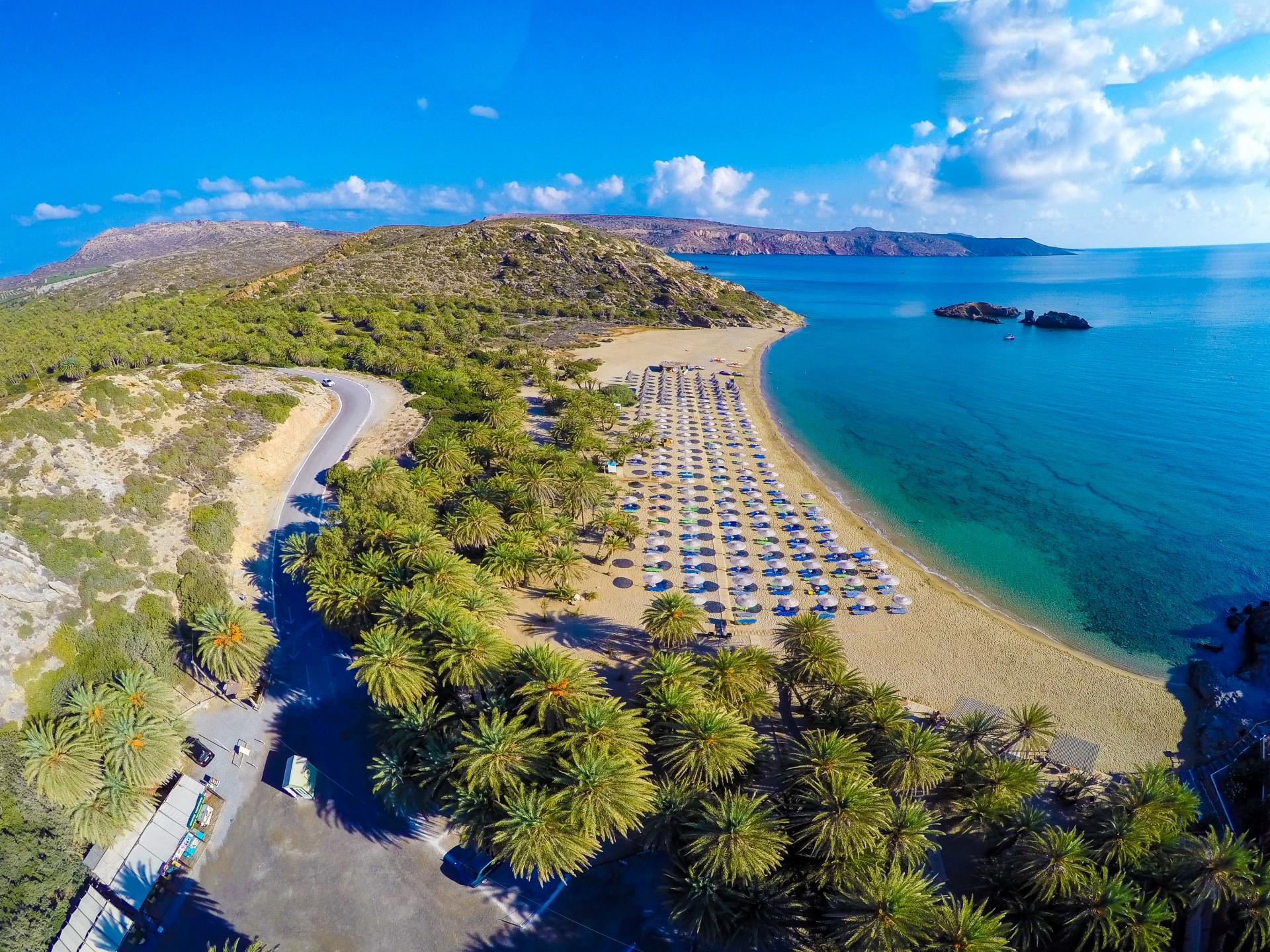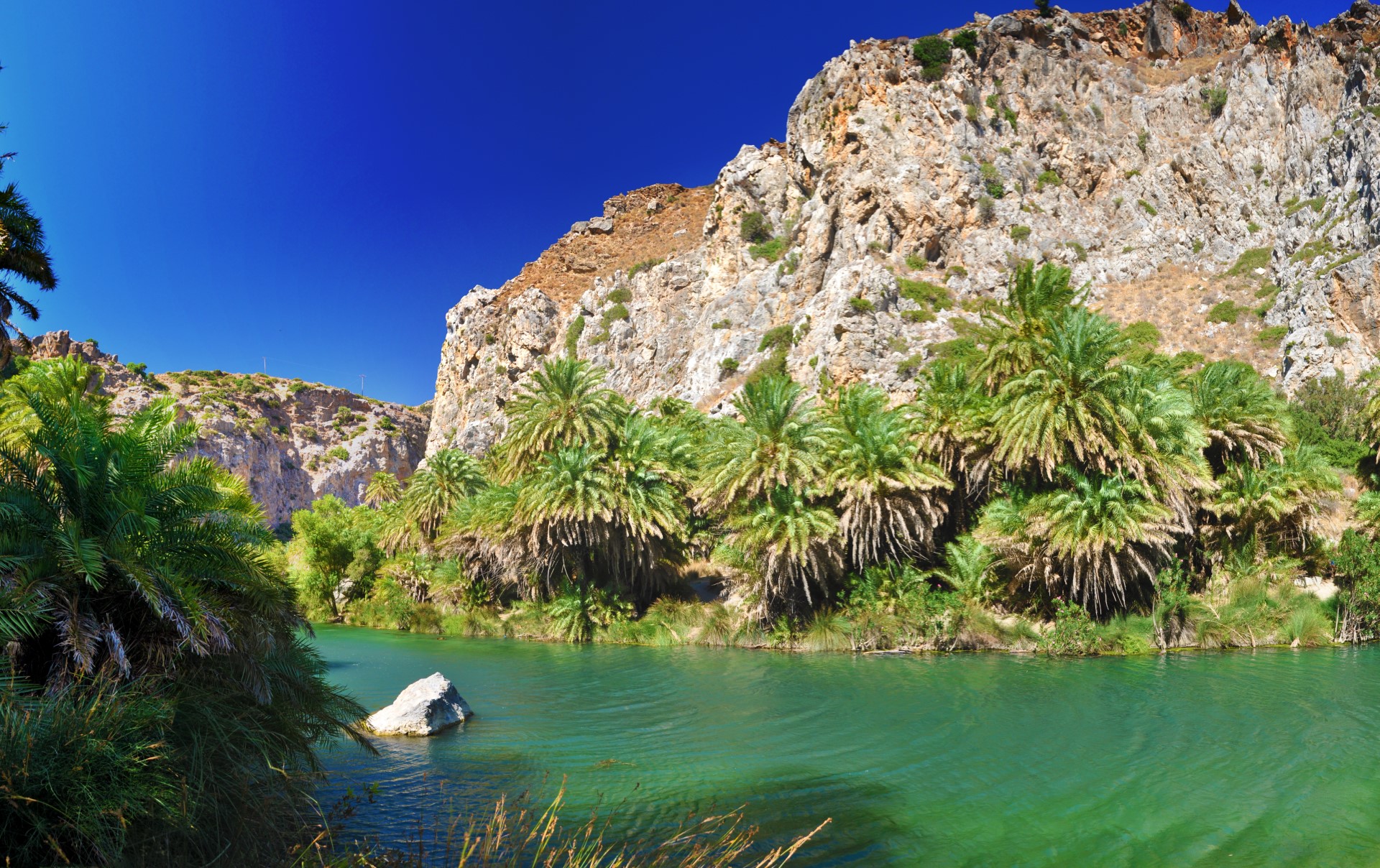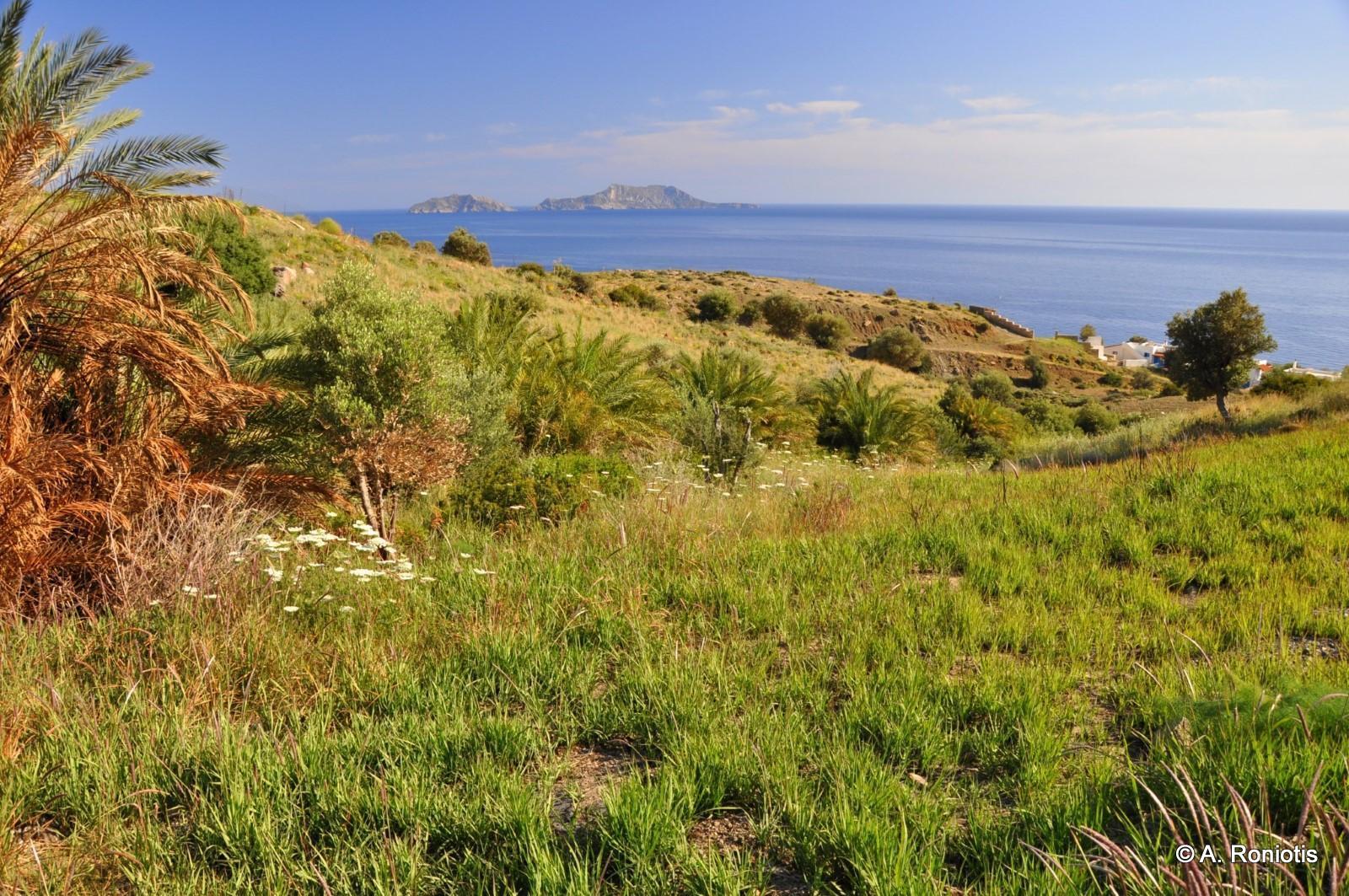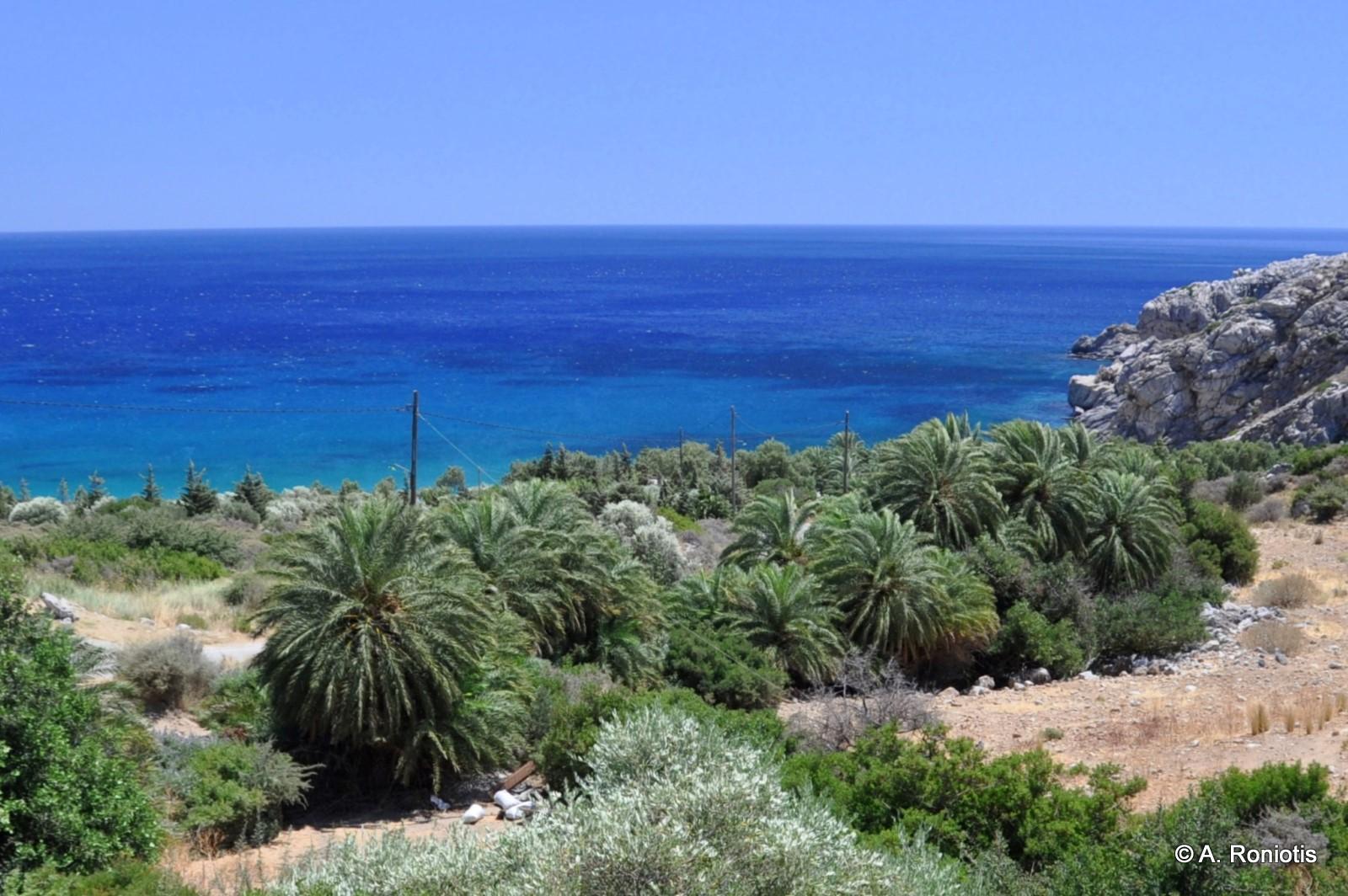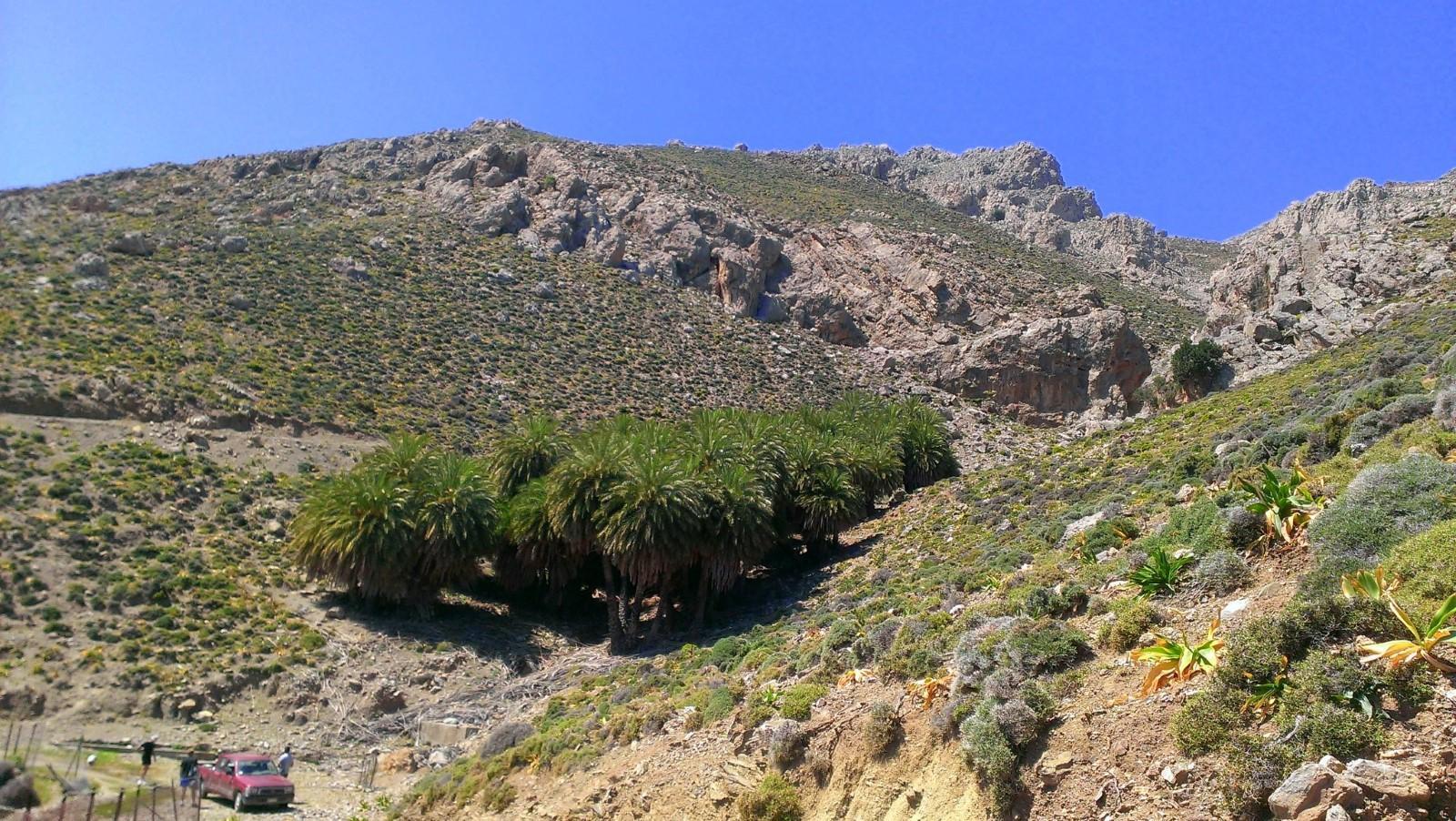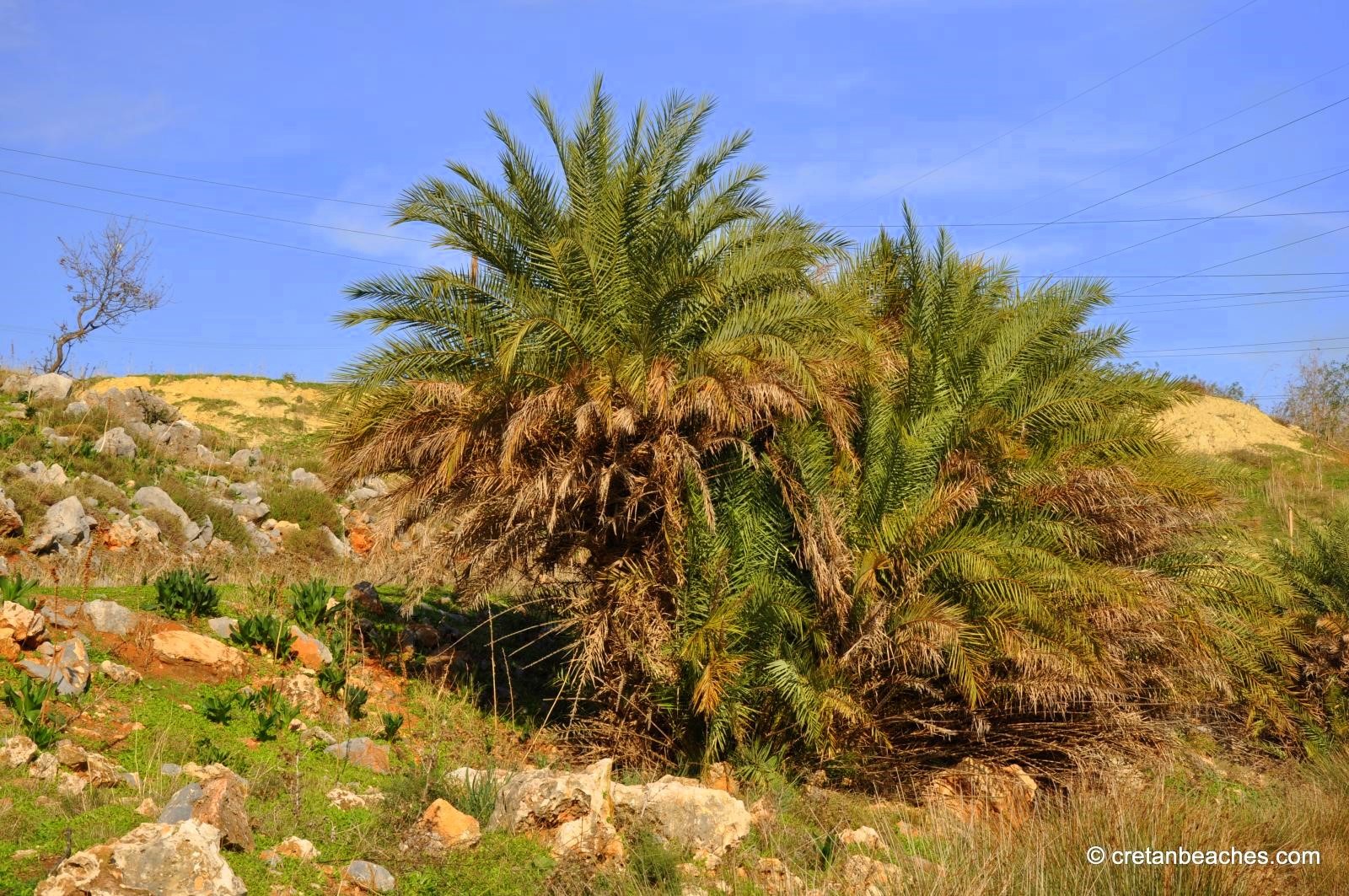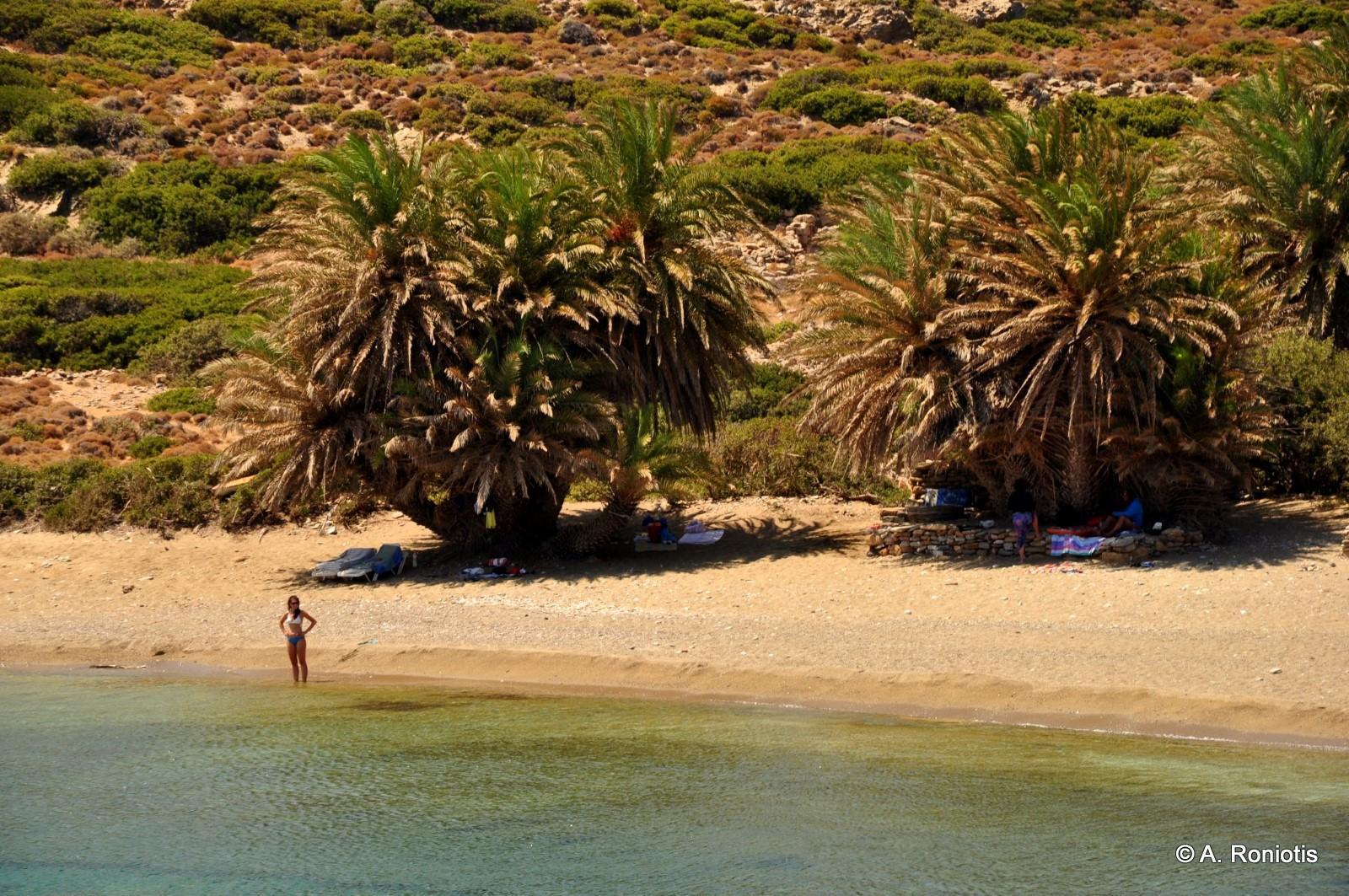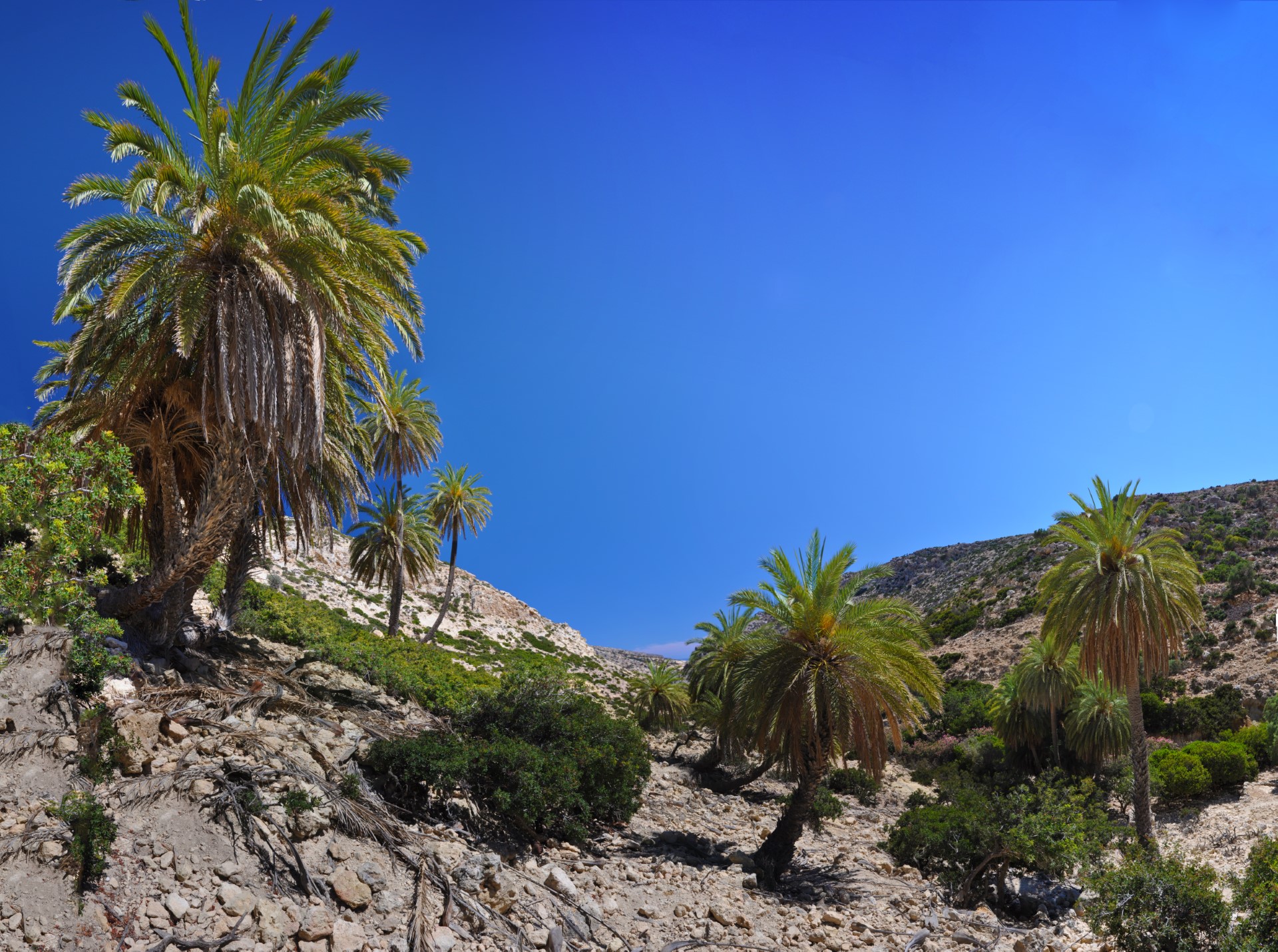The palm of Theophrastus (Phoenix theophrasti), also known as the Cretan Date Palm is a rare endemic species of the Aegean Sea, which is met all over Crete, in a limited number of Aegean islands and in Antalya (southwestern Turkey).
It grows in moist sandy plains and rocky areas near sea level. Crete is home to the largest natural palm grove in Europe, namely Vai in East Crete. Other groves are smaller, like the palm groves of Lake Preveli in South Rethymnon, Agios Nikitas and Martsalo in Asteroussia Mountains. Apart from these, there are many with smaller clusters of palm trees such as the micro-reserve of Aspri Limni (White Lake) near Elafonissi and the clusters of Souda near Plakias, Almyros River near Gazi and Finikidia near Agios Pavlos.
The species was firstly identified as different in 1967 by Greuter and was named after the father of botany, Theophrastus (372-287 BC), who first indicated the existence of palm trees in Crete. The date palm of Theophrastus is often confused with the (imported) ornamental species of the Canary Islands (Phoenix caraniensis), which does not produce offshoots and grows faster.
The Cretan palm reaches a height of up to 15m, usually produces many offshoots, can have more than one main trunks and looks like the common date palm (Phoenix dactylifera). However, the fruit, which resembles dates, is not commercially exploited, although its occasionally eaten by the Cretans.
During the last years, a huge concern about the future of the endangered Cretan palm has derived, as the other palm species listed on the island have been devastated by the red palm weevil (Rhynchophorus ferrugineus). This beetle was accidentally introduced in Crete, carried in the trunk of some imported palm trees coming from Africa, and has caused huge ecological damage. Till now, fortunately the palm of Theophrastus has not been severely affected, probably because the interior of the trunk is not as tender as the Canary palm trees. But when the beetles destroy all the rest vulnerable palm species, it is likely to start destroying the Cretan date palms.
10 places of Crete with palmtrees









 Cretan Date Palm
Cretan Date Palm 






